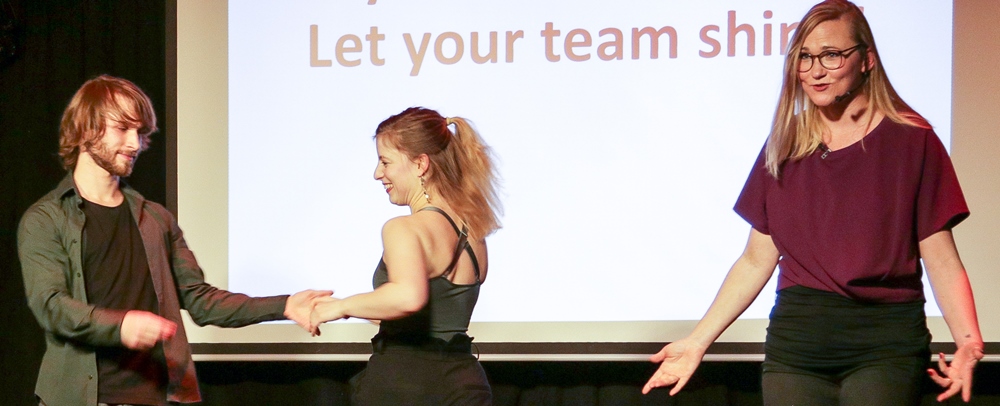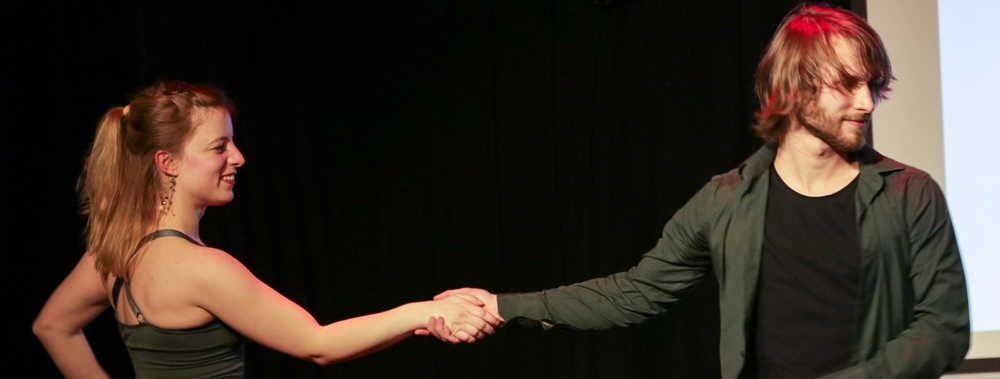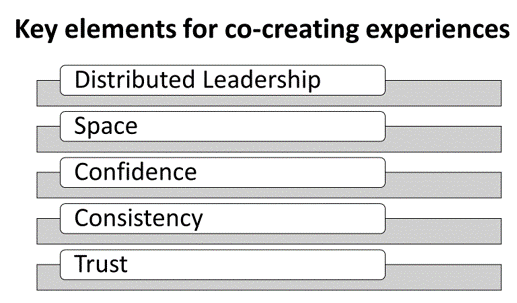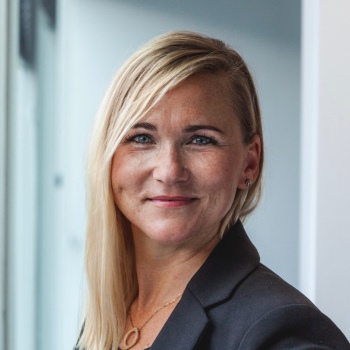Dance Your Way Into Leadership – What Can We Learn from Dancing for Leadership in a Complex World?
Dr. Barbara Covarrubias Venegas
13 February 2020 | VGL Forum

The 1st VGLForum 2020, which took place on 28 January 2020, addressed the topic of leadership in a complex world using dancing as an analogy for leadership learning.
Searching for the keyword ‘VUCA’ on Google brings up about 3,130,000 results in 0.59 seconds. The acronym VUCA stands for Volatility | Uncertainty | Complexity | Ambiguity.
Briefly explained, VUCA summarizes the challenges in today´s business environment. We live in a world that’s changing, accelerating and becoming more unstable every day.
Studies show that while external complexity has increased 6-fold, internal complexity has increased 35-fold. In times characterized by massive change, fluctuating markets, people/employees moving more freely, and global virtual communication eliminating barriers and connecting in real time, leaders play a more decisive role than ever before. Yet, traditional leadership models and management instruments are only partially in line with the reality and demands of the VUCA world.
What can leaders learn from dancing?
There is a vast body of research looking at the effects of dancing on health and well-being. A recent extensive report edited by the World Health Organisation in 2019 shows clearly that we can dance our way into improved health and well-being (online here). Dancing protects our brain more than doing crosswords or reading: Risk of suffering dementia decreases by 35% when we read, by 47% when we do crossword puzzles, and by 76% when we dance frequently (Verghese, J. et. Al. 2003). Besides, studies also show that we can dance our way into happiness.
West Coast Swing Dancing is a CO-CREATIVE experience. And that’s exactly how we should re-think leadership in our organizations.

In the picture: Stella Maria Schletterer & Christopher Piffel www.chris-stella.dance
West Coast Swing (WCS) is a partner dance with roots in the Lindy Hop. It is characterized by an elastic look that results from its extension-compression technique of partner connection and is danced primarily in a slotted area on the dance floor. The dance allows for both partners to improvise steps while dancing together, putting WCS in a very short list of dances that emphasize improvisation. Get a glimpse of what WCS looks like here.
During this VGLForum, we discussed several elements of how to co-create experiences on the dance floor AND in organizations. In this blog article, I will focus on distributed leadership and participation.

Distributed leadership and participation
A parrot talking to the pirate is not a conversation, he is only repeating. WCS dance is a dialogue, and so is leadership. But how can we create an environment for dialogue and not continue to be in a monologue, where only managers/leaders or “big bosses” make decisions?
We need to consider distributing leadership and foster participation from EVERYONE.
Organizations with strong hierarchies tend to face the struggle of less participation by employees. If we think about leadership as being confined to only those in positions of authority, then we are wilfully ignoring the leadership talent and capability of many others.
In line with this, dances in which only the leader decides on the next move, turn and pattern don’t fully use the potential of both dancers. When we change the roles of leader and follower on the dance floor, we can understand better and literally feel what it means to be a good leader – or what it means to follow and be attentive to the signals a leader is transmitting to us. Accordingly, changing roles in organizations helps us change our perspectives and keep a flexible mindset. This trains our empathy and agility!
The best leaders are also good followers
This is one of the most important aspects from what I learned on the dance floor: the best leaders are also good followers. In organizations, however, the moment we start our leadership careers, we often don’t move into a “follower role” again. Mostly, the reasons are economical as leadership careers are still better remunerated, but also due to status perceptions.
With such rigid roles, leaders can become inflexible. We then often have too many layers of hierarchy, which slow us down – especially in a fast-changing environment
To counter this, the participation of employees/followers is becoming more important than ever. Many organizations already rely heavily on self-organizing teams. An agile or Scrum team’s job is to self-organize around challenges. The fewer constraints or controls put on a team, the better. If leaders overly pressure how an agile (or self-organizing) team solves their given challenge, self-organization will not happen. The team will shut down; because it has already been told so much about the challenge and how to solve it that it will wait to hear the rest.
Concluding, it can be said that leaders are still important, but their role changes. WCS Dancing helps you to learn through this analogy, to reflect on your leadership behaviour and dance your way into becoming a better leader – and being healthier and happier. ????
Step out of your comfort zone — you do not need to be a dancer to learn from dancing to become a better leader!
Leadership Programs
In tailored programs, leaders learn to connect with international best practices to operate with more confidence in a complex global market.
VGL Workshop: Dance Your Way Into Leadership
What can we learn from dancing for leadership in a complex world?
Date: 5 June 2020
Time: 09:00-14:00
Location: Vienna, Austria
Participants: max. 14
Recommended Readings
Bernardis, A.; Hochreiter, G.; Lang, M. & Mitterer, G. (2016) #Nextland: Auf zu neuen Ufern. Harvard Business Manager, online here.
Yves Doz (2018) Why Successful Companies Usually Fail, INSEAD Knowledge, online here.
Studies cited in this article
Rosen, R. H. (2010). Leading the Emotional Side of Change: The New 21st-Century Lead-ership Capability. In: Goldsmith, M., Baldoni, J., & McArthur, S. (Ed.). AMA Hand-book of Leadership. New York: AMACOM, 167–178.
Bennett, N., & Lemoine, G. J. (2014). What a Difference a Word Makes: Understanding Threats to Performance in a VUCA World. Business Horizons, 57 (3), 311–317. DOI: 10.1016/j.bushor.2014.01.001.
Johansen, B. (2009). Leaders Make the Future: Ten New Leadership Skills for an Uncer-tain World. San Francisco, CA: Berrett-Koehler.
Mack, O., & Khare, A. (2016). Perspectives on a VUCA World. In: Mack, O., Khare, A., Krämer, A., & Burgartz, T. (Ed.). Managing in a VUCA World. Springer-Verlag. WHO 2019.
Verghese, J. et. Al. (2003) Leisure Activities and the Risk of Dementia in the Elderly. N Engl J Med; 348(25): 2508-2516.
Marcin Zajenkowski, Konrad S. Jankowski & Daria Kołata (2015) Let’s dance – feel better! Mood changes following dancing in different situations, European Journal of Sport Science, 15:7, 640-646.
Meng Tian, Mika Risku and Kaija Collin (2016): A meta-analysis of distributed leadership from 2002 to 2013: Theory development, empirical evidence and future research focus, Educational Management Administration & Leadership, Vol. 44(1) 146–164.


Dr. Barbara Covarrubias Venegas
Barbara is a senior researcher and lecturer at different universities in Austria and abroad and Visiting Professor at the University of Valencia/Spain. Her research and training focus includes New Ways of Working, Flexible Organizations, Organizational Culture and Digital Leadership. These topics also form the focus in her keynotes, workshops and coaching activities. Read more

Dr. Barbara Covarrubias Venegas
Barbara is a senior researcher and lecturer at different universities in Austria and abroad and Visiting Professor at the University of Valencia/Spain. Her research and training focus includes New Ways of Working, Flexible Organizations, Organizational Culture and Digital Leadership. These topics also form the focus in her keynotes, workshops and coaching activities. Read more
Recent Posts
Remote Work Guidelines: How to Work From Home or Anywhere Else Effectively
What if from one day to another, working from home becomes a MUST (e.g. COVID-19), but we have no real coordinated experience in doing so?
Time to Reflect: How to Do an End-of-Year Review
What did you learn from 2019 – and how to slide into 2020.
The Power of Resilience – How to Lead Under Pressure
How can you implement resilience as a skill for individuals, teams and organizations?

Vienna Global Leaders is a platform by EUNEPA dedicated to developing and connecting managers and leaders in a complex world.
Vienna Global Leaders by EUNEPA
Wiedner Hauptstrasse 142 / Top 5, 1050 Vienna, Austria
T: +43 1 996 2078
E: info@viennagloballeaders.com




0 Comments